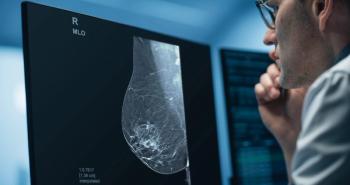
Breast tomosynthesis attracts CAD research
Breast tomosynthesis may be a work-in-progress in the RSNA exhibit halls, but researchers are already considering ways to incorporate computer-assisted detection algorithms to improve its efficacy.
Breast tomosynthesis may be a work-in-progress in the RSNA exhibit halls, but researchers are already considering ways to incorporate computer-assisted detection algorithms to improve its efficacy.
Researchers from the University of Chicago and the University of Michigan presented papers Tuesday morning that evaluated several techniques for reconstructing suspected tumors from the multiple slices of tomographic acquisition or from the compiled volume data set. Both groups worked with the GE Digital Breast Tomosynthesis prototype developed by Dr. Daniel Kopans at Massachusetts General Hospital.
The Michigan researchers produced an area of 0.87 under the ROC curve with 80% sensitivity and two false positives per case, using a set of synthesized data. Looking only at projection views, the area under the ROC curve dropped to 0.82. Both were based on 26 cases with 23 masses, including 13 malignancies.
"We achieved fewer false positives with 3D views than with 2D, and the information fusion is more effective," said lead researcher Heang-Ping Chan, Ph.D.
Chicago researchers evaluated only projection views. A standard tomosynthesis scan involves 11 low-dose conebeam projections through the breast at 5-degree angles spread over an arc. The projections intersect with each other at various points and allow the software to confirm areas of suspected masses from more than one angle. For the Chicago trial, any region that was intersected by six or more projections was considered a positive finding. Among 21 cases of confirmed breast masses, the team achieved a sensitivity of 86%, but with six false positives per case.
In addition to projection views and reconstructed volumes, CAD could also be developed to look for suspicious findings across the 50 to 80 reconstructed image slices that could be produced for each set of breast data, the authors said.
Newsletter
Stay at the forefront of radiology with the Diagnostic Imaging newsletter, delivering the latest news, clinical insights, and imaging advancements for today’s radiologists.




























